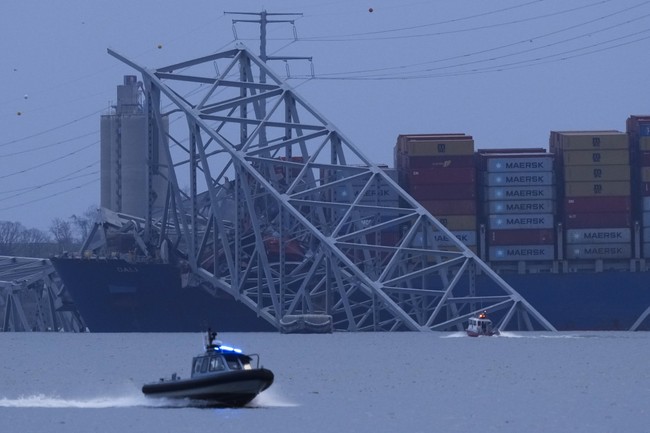Top News
Not Just Bridges. The Catholic Church Is Collapsing in Baltimore.

The bridge collapse in Baltimore has ground many businesses to a halt, leaving municipal leaders scrambling to figure out what the next steps should be. But that’s not the only thing collapsing in Charm City. After years of planning and adjustments, the Catholic Archdiocese of Baltimore is also launching some major adjustments. In what is being described as a “retooling of operations,” the Catholic Church is preparing to consolidate the number of parishes in the city and the surrounding suburbs from 61 to 21. In other words, there will be barely one-third the number of worship centers for Catholics in Baltimore than there previously were. These changes reflect the shrinking population in general, but also the decline in people who regularly attend services each week. It’s a sad statement about the soul of what was once one of America’s greatest and most prosperous cities. (Baltimore Sun)
The Archdiocese of Baltimore has been working for two years to develop a plan for retooling its operations in the city, and officials have taken their biggest step so far in asserting how serious they are about changing its way of doing business in Baltimore.
A proposal shared Sunday with parishioners would, if approved, cut the number of parishes in the city and several suburbs from from 61 to 21. It would slash the number of worship sites in the same area from 59 to 26.
The sites that would be lost reflect more than 730 years of Catholic life in the city.
The Archdiocese describes the new arrangement as a “leaner and more responsive” model required to meet the needs of congregants during a period of “existential crisis” for the city as a whole. The Baltimore auxiliary bishop in charge of the transition said that they are hoping to help rebuild “neighborhoods in decline.”
In downtown Baltimore, St. Vincent de Paul has been in continuous operation since 1841. There is no way to estimate how many people have worshipped there over the course of nearly 200 years. Soon it will be closed. The Catholic Church in the city has been facing a number of challenges in recent years. They filed for bankruptcy last September. Two months later, St. Benedict closed after it was revealed that its priest had been involved in a sex scandal and coverup. The church is claiming that neither of those incidents were related to the reorganization, but they clearly didn’t help matters.
Overall, these changes are more likely a reflection of the fact that church attendance has been dropping for years. That’s true of all religions, not only in Baltimore but across the nation. Charm City has been particularly hard hit, however. The rolls of regular protestant churchgoers dropped four percent over the past decade but Catholic attendance fell twelve percent during the same period. Recent Gallup polling shows that more than one-fifth of Americans now claim no religious affiliation. Christian faiths have taken the largest hits, while Jewish and Muslim worship centers have enjoyed modest increases in attendance over the same period.
While it would be hard to pin down specific numbers, it’s difficult to ignore the likelihood that this decline in church attendance is a symptom of the broader problems afflicting Baltimore as a society. Rampant crime rates and endemic poverty plague the city. Single-parent households are the rule rather than the exception. School attendance has plummeted. Those with the ability to do so have been fleeing. The population of the City of Baltimore fell by nearly 20,000 between 2021 and 2023. Churches and a common belief in God help build communities and encourage civil behavior. Without faith, a void is created that may be filled with loneliness, hopelessness, and lawlessness. If the community leaders who are currently working to rebuild Baltimore truly want to make progress, perhaps they could start by encouraging people to find their way back to church each Sunday.
Read the full article here


















